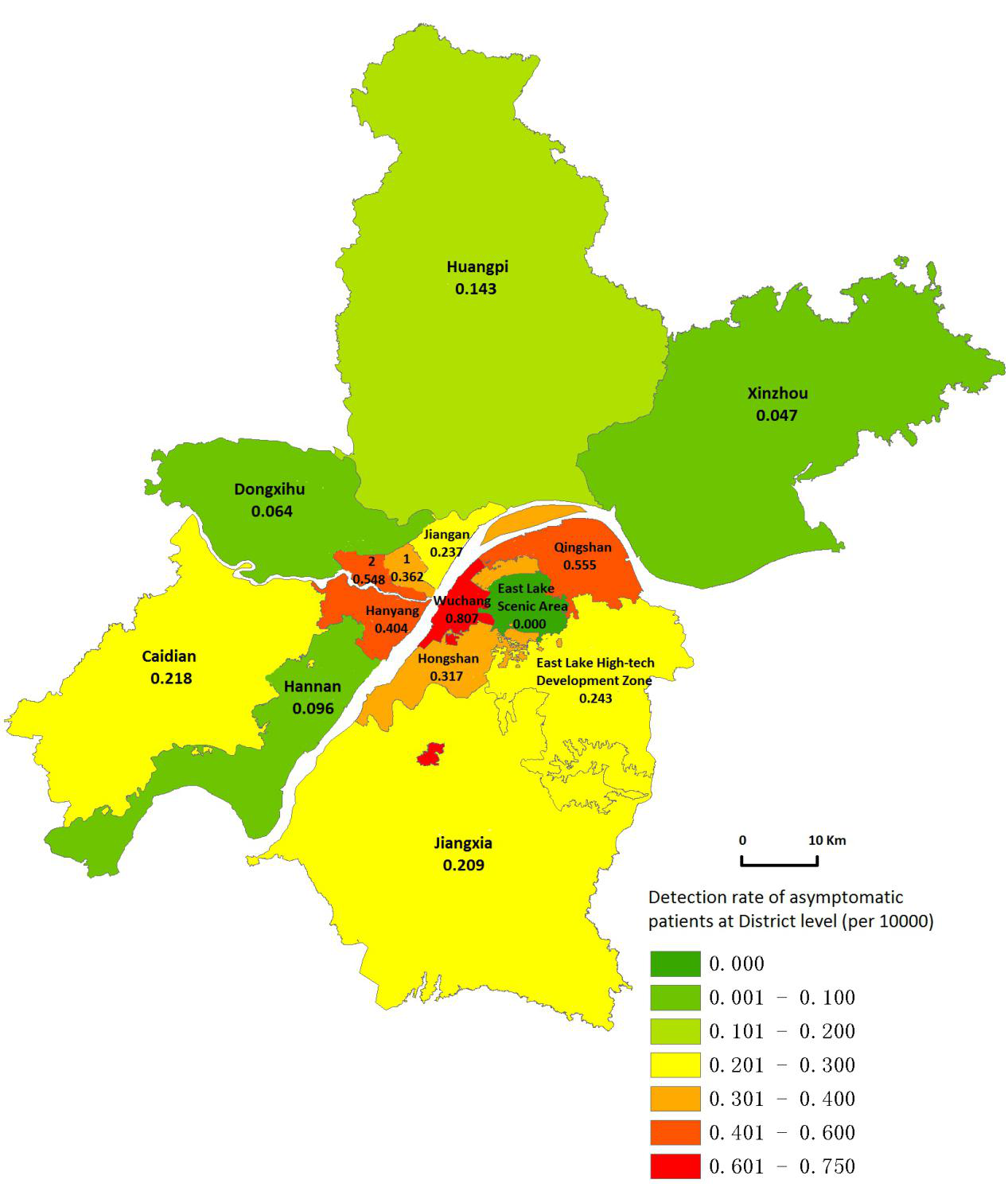On November 20, 2020, the team led by Professor Lu Zuxun from School of Public Health, Tongji Medical College, Huazhong University of Science and Technology, published an academic paper titled “Post-lockdown SARS-CoV-2 nucleic acid screening in nearly ten million residents of Wuhan, China” in Nature Communications. The paper reported the processes and results of the Wuhan SARS-CoV-2 nucleic acid screening program in May to all its citizens. Professor Cao Shiyi, Lecturer Gan Yong and Dr. Wang Chao, from School of Public Health, were the co-first authors. Professor Lu Zuxun and Professor Yin Xiaoxv from School of Public Health, Professor Song Fujian of the University of East Anglia and Professor Lv Chuanzhu of Hainan Medical College, were the co-corresponding authors.
Up to now, the Coronavirus Disease 2019 (COVID-19) outbreak has been ongoing globally for a year. Following strict lockdown and a number of public health measures, the COVID-19 epidemic was generally under control in China. As the city most severely affected by the COVID-19 in China, Wuhan had been under lockdown measures from January 23 until April 8, 2020. During the first 2 months after city’s reopening, there were only a few sporadic COVID-19 cases in Wuhan (six newly confirmed cases from April 8 to May 10, 2020). However, there was still concern about the risk of COVID-19 in Wuhan, which seriously affected the resumption of industrial production and social services, and hampered the normal lives of residents. In order to ascertain the current status of the COVID-19 epidemic, the city government of Wuhan carried out a comprehensive citywide nucleic acid screening of SARS-CoV-2 infection from May 14, 2020 to June 1, 2020.
Professor Lu Zuxun’s team was praised by the Wuhan government, for they perfectly demonstrated the meaning and value of Wuhan SARS-CoV-2 nucleic acid screening program concerning the prevention and control of the COVID-19 epidemic and socio-economy. In addition, they also undertook data analysis, technical reports writing, press releases and academic research of the screening program.
The paper showed that the screening program recruited residents (including recovered COVID-19 patients) who were aged ≥ 6 years and currently living in Wuhan, and the Wuhan city government invested 900 million RMB for the screening program. A total of 63 nucleic acid testing laboratories, 1,451 laboratory workers and 701 testing equipment were involved in the nucleic acid testing. Besides, about 50,000 health professionals (most were doctors and nurses from community health centers) and more than 280,000 person-times of community workers and volunteers contributed to it. In the peak time, up to 2,907 sample collection sites were functioning at the same time in Wuhan. In addition, virus cultures were conducted on swab samples from people who were tested positive, and residents accepted the antibody tests in Wuchang district.
In the study, it displayed that the screening program was completed in 19 days (from May 14, 2020 to Jun 1, 2020) and tested a total of 9,899,828 citizens, 9,865,404 had no previous diagnosis of COVID-19 and 34,424 were recovered COVID-19 patients. The screening of the 9,865,404 participants without a history of COVID-19 found no newly confirmed COVID-19 cases, but identified 300 asymptomatic positive cases with a detection rate of 0.303/10,000. Of the 34,424 participants with a history of COVID-19, 107 tested positive again, giving a re-positive rate of 0.310%. Virus cultures were negative for all asymptomatic positive and re-positive cases, indicating no “viable virus” in positive cases detected in this study.
The asymptomatic positive rates in Wuchang, Qingshan and Qiaokou district were higher compared to others. Moreover, districts with a high detection rate of asymptomatic positive persons generally had a high prevalence of confirmed COVID-19 cases. From the long-tailed characteristic of infectious diseases epidemic, the researchers found that asymptomatic positive rates in different districts of Wuhan were correlated with the prevalence of previously confirmed cases, proving the accuracy and authenticity of the COVID-19 epidemic reports in Wuhan.

The study pointed that the citywide screening of SARS-CoV-2 infection in Wuhan was a mass screening program, and the results revealed Wuhan had got remarkable achievements in the prevention and control of the COVID-19 epidemic, which would be conducive to alleviate the concerns of residents in Wuhan and other areas, and promote the recovery of social production and life. Significantly, the citywide screening could provide invaluable experiences such as the organization process, detailed technical methods used and analysis of data for other cities and regions worldwide.
Link: https://www.nature.com/articles/s41467-020-19802-w
Chinese News Link: http://news.hust.edu.cn/info/1003/41059.htm

